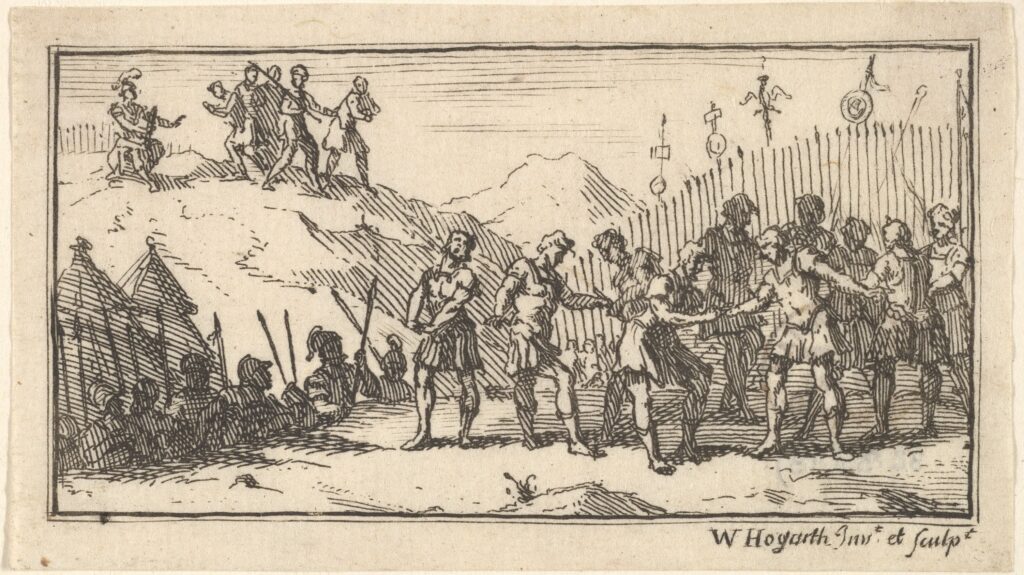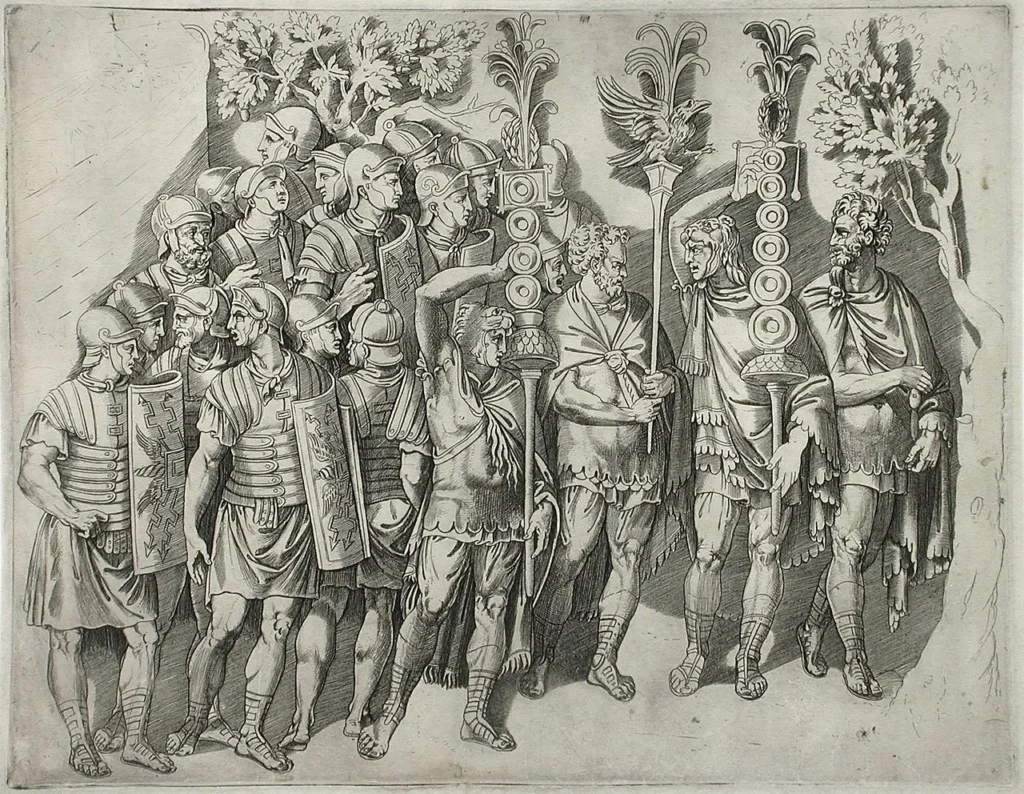Last updated on July 20th, 2024 at 06:58 pm
Of all of the world’s empires, few have risen from such inauspicious beginnings to such heights as did that of the Romans. For several hundred years following its mythical foundation in 753 BCE, Rome was just one of many towns in Central Italy.
It controlled little more than some farmland in the surrounding countryside. In 390 BCE, a marauding army of Celts that had entered Italy even managed to sack the city of Rome.
But then, over the next 200 years, Rome began expanding aggressively, first conquering Italy and then becoming the dominant force in the Western Mediterranean after two wars against Carthage in the third century BCE.
The emergence of the Roman legions brought about this change of fortune as the finest fighting force in the Western Mediterranean.
Unfortunately, part of this martial prowess was based on a rigid discipline that included the brutal practice of decimation of legions and cohorts who showed cowardice on the battlefield, were insubordinate or mutinous, or even threatened desertion.

What was Decimation?
The Latin of decimation is decimatio. The first part of this, decem, means ten in Latin, which is the key point here.
The practice of decimatio involved legions or cohorts judged guilty of cowardice, mutiny, or desertion, having to draw lots. Every tenth legionary was slain as punishment for their crime.
A legion comprised approximately 5,000 men, while a cohort comprised 480 men. Generally speaking, these were divided into groups of ten men when a decimation occurred.
So a cohort would be split into 48 groups of ten men each. These would then draw lots, and one man in each group of ten would draw the short straw. Whoever did would meet a vicious end.
Accounts of the practice provided by Roman and Greek historians, such as Livy and Polybius, indicate that the other nine were required to take the unlucky member of their group’s life with clubs or stones.
The Romans Weren’t the First to Practice Decimation
The Romans, it should be noted, were not the first people of the ancient world to employ harsh military discipline. The Spartans were notoriously cruel to raise the most powerful warriors in the Greek world.
The Macedonians later conquered the entire Greek world and, under Alexander the Great, expanded eastwards as far as India, employing a practice similar to decimation. Alexander is believed to have decimated about 10% of a small army of 6,000 men.
The Romans Were The First to Widely Use Decimation
The Romans were allegedly the first military power to employ a practice like this with regularity. There are records of it being utilized as early as 471 BCE when Rome was still squabbling with other small towns to control the wider Latium district in Central Italy.
Half a century later, it was employed again during the Samnite Wars, in which Rome sought to establish itself as the dominant power in Central and Southern Italy.
Finally, decimation was employed during the Second Punic War against Carthage between 218 BCE and 201 BCE. Thus, the heyday of this brutal practice was in the fourth and third centuries BCE.
Thereafter resort to decimation slowly waned, and in the 130s BCE, during a time of great social upheaval within the Roman Republic, the practice was largely banned.

It might well have died out altogether at this stage. Still, beginning in the 80s BCE, the Roman Republic was shaken by civil wars between many powerful generals seeking to dominate the Republic.
As this crisis gripped the Republic, the practice of decimatio was resurrected, and there is evidence of Marcus Crassus utilizing it when putting down the slave revolt of Spartacus in 72 BCE.
Julius Caesar possibly employed cruel punishment in 49 BCE at the beginning of his war to control the Republic against Pompeius Magnus.
Once the civil wars ended following Caesar Augustus’ ascent as Rome’s first emperor in 27 BCE, decimation became less frequent. Indeed it became increasingly implausible to do so.
Decimation was no longer practical
Over time, the Roman legions began to accrue enormous power within the empire, notably the Praetorian Guard that defended Rome and Italy itself.
These, for instance, effectively deposed and slew Emperor Caligula in 41 CE and placed his cousin Claudius on the throne. In 68 CE, following the fall from power of Emperor Nero and his suicide, civil war followed, during which four emperors were proclaimed across the empire in the space of twelve months.
The legions backed their claims under their control, and they could not aspire to the imperial title without military support. This process abated somewhat in the second century, but dozens of emperors were made and destroyed by the legions in the third century.
It was impossible to consider decimation as a plausible military discipline in this environment. Moreover, in a world where the emperors effectively served at the pleasure of the legions, such brutal discipline could not be enforced within the ranks of Rome’s armies.
Thus, other than some possible instances of it occurring in the late third century CE, the accuracy of which is heavily disputed, decimation was seemingly almost entirely abandoned in imperial times.
Decimation in the Modern Era
The Romans were not the last to display such brutality. The modern age lacks examples of extremely vicious military discipline being employed.
The Thirty Years’ War, which ravaged Germany and surrounding countries between 1618 and 1648, saw widespread acts of savagery to enforce military discipline.
The practice of drawing lots and slaying 10% of one’s own forces was followed exactly by the Paraguayan army at one point during the War of the Triple Alliance in South America between 1864 and 1870.
But surely, the most brutal form of modern military discipline was that employed by the Soviet Red Army during the Russian Revolution and the Second World War.
During these conflicts, its ‘blocking units’ set up machine gun turrets behind its own lines to gun down any of its soldiers who tried to retreat. As the such, cruel military discipline has unfortunately existed in all age.
Related Reading
If you enjoyed this article, here are a few more you might enjoy:
The Strange and Brutal History of Crucifixion
Why Did Governor of Judea, Pontius Pilate, Execute Jesus?
The Holy History of the Spear of Longinus
Sources
G. R. Watson, The Roman Soldier (Ithaca, 1969), p. 119.
Eugenia C. Kiesling, ‘Corporal Punishment in the Greek Phalanx and the Roman Legion: Modern Images and Ancient Realities’, in Historical Reflections, Vol. 32, No. 2 (Summer, 2006), pp. 225–246.
Charles Goldberg, ‘Decimation in the Roman Republic’, in The Classical Journal, Vol. 111, No. 2 (2015/2016), pp. 141–164.
Stefan G. Chrissanthos, ‘Caesar and the Mutiny of 47 BC’, in The Journal of Roman Studies, Vol. 91 (2001), pp. 63–75.
Charles Goldberg, ‘Decimation in the Roman Republic’, in The Classical Journal, Vol. 111, No. 2 (2015/2016), pp. 141–164.
Kerstin Bischl, ‘Presenting Oneself: Red Army Soldiers and Violence in the Great Patriotic War, 1941–1945’, in History, Vol. 101 (2016), pp. 464–479.

